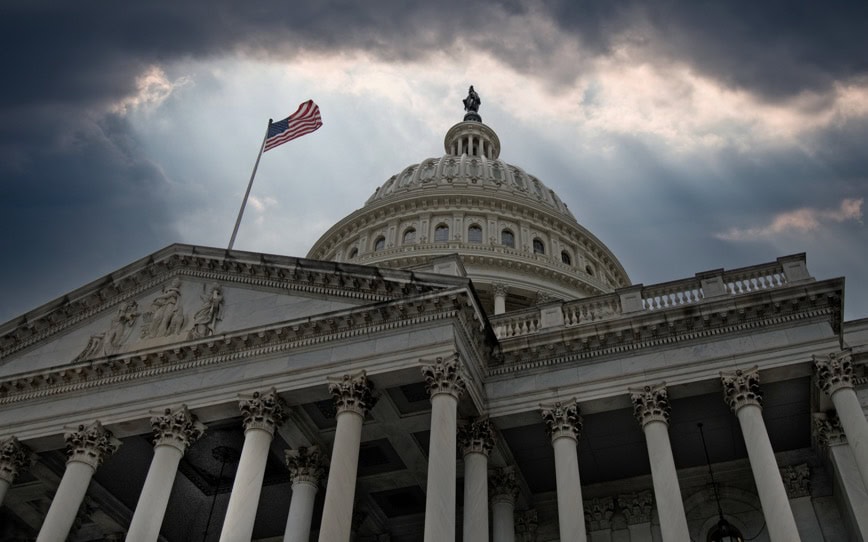Amid all of the excitement and hoopla surrounding the inauguration and flurry of activity from President Donald Trump, there is one dirty little secret that seems to have escaped any visibility.
No, it is not the extraordinary amount of money the new President and his wife Melania have made through their new multi-billion dollar memecoins $Trump and $Melania, although that does seem an extraordinary state of affairs for a President who has oversight over cryptocurrencies.
No, the dirty little secret is that the US is deeply in debt and that nobody from either side of the political fence seems to think it is a problem.
There has been a lot of talk about US exceptionalism during the Artificial Intelligence boom but that exceptionalism certainly applies to the willingness of other countries to finance America’s burgeoning amount of debt.
However, sooner or later there is a day of reckoning for all debtor nations and that seems to be getting closer for the US.
Budget Office rings the warning bell
The Congressional Budget Office (CBO) has certainly rung the warning bell, with the level of government debt set to overtake even the record levels hit in the aftermath of World War II in just four years as a percentage of the economy.
That is an even more extraordinary result when you consider that the CBO have lowered their estimates in line with stronger economic growth but have not factored in any of President Trump’s planned spending, including his plan to extend expiring provisions of his 2017 tax cuts and further steps to reduce levies that will reduce government collections.
Total US government debt is nevertheless projected to reach 107% of GDP by 2029, exceeding the 106% record set in 1946, just after the end of World War II after the US had played a massive part in financing the war effort.
For this year, the CBO projection for the budget deficit has now dropped substantially to just $US1.87 trillion ($3.02 trillion) but that still represents an astonishing 6.2% of US gross domestic product.
When you consider that the mammoth US war effort was behind the WWII numbers, it is even more astonishing that the US fiscal position is so dire even as stronger economic growth drives higher projections for individual and corporate income and tax collections.
Strong growth will not be enough to hide debt levels
Even if stronger growth is sustained, the forecasts of escalating deficits and debt will surely encourage those remaining fiscal conservatives in the Republican ranks and Democrats opposing plans for greater tax cuts of the need for genuine spending cuts and revenue gains.
As CBO Director Phillip Swagel outlined when releasing the figures recently: “The fiscal situation is daunting, the debt trajectory is unsustainable. It’s just the economy is a bit bigger than we thought it was last June, and therefore there’s more revenue.”
By 2035, total debt is forecast at $US52.1 trillion, which would be 118.5% of GDP. At the end of the 2024 fiscal year – the end of September – it stood at $US28.2 trillion, or 98% of GDP.
By earlier CBO estimates just extending the expiring provisions in Trump’s 2017 tax law would increase deficits by $US4.6 trillion over 10 years, and that is not taking into account extra tax cuts Trump has promised.
Mammoth task to cut deficits
Pruning the rising debt burden will not be an easy task.
Much of it is driven by demographics, with ballooning Social Security and Medicare costs as the Baby Boomer generation retires and of course the interest payments on the debt are taking up a huge chunk of spending as well.
Most analysts say pruning Social Security and Medicare and increasing taxes are essential to get the debt problem under control but both sides of the political divide have opposed lowering Social Security benefits despite the cost of paying them out to an expanding elderly population.
This is one of the reasons why longer-term US Treasury yields have remained stubbornly high even in the face of falling official interest rates in the US, with foreign investors effectively demanding higher interest payments for the risk of taking on more US debt.
Higher debt yields driving deficits
Those higher yields on Treasury securities mean the US is paying an increasing amount to service its debt, estimated to reach an amazing 3.2% of GDP in 2025 and by CBO estimates a staggering 6.1% of GDP by 2035.
Naturally, if the US takes decisive action soon on reining in its Budget deficit, those cascading numbers can be stabilised and even reversed but it doesn’t take too much imagination or extrapolation to imagine a scenario in which US debt effectively gets out of control as bond rates rise sharply and the US dollar dives.
It is going to take a lot more than Elon Musk and his work on the new government task force DOGE (Department of Government Efficiency) to get the US Budget and debt back into some sort of shape, although at least that marks a start in looking at runaway government spending.
Hopefully, those efforts can be greatly expanded or US exceptionalism risks becoming a byword for a looming debt and deficit crisis that really would change the world.
